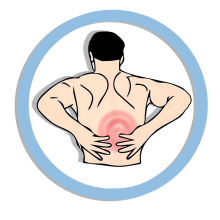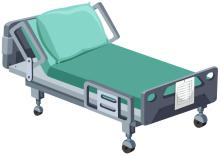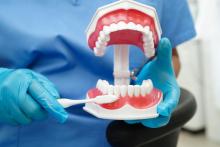Recent Publications

Michael Edelstein: Migration and outbreaks of vaccine-preventable disease in Europe: a systematic review Lancet Infect Dis .)
Migrant populations are one of several underimmunised groups in the EU or European Economic Area (EU/EEA), yet little is known about their involvement in outbreaks of vaccine-preventable diseases. This information is vital to develop targeted strategies to improve the health of diverse migrant communities. We did a systematic review (PROSPERO CRD42019157473; Jan 1, 2000, to May 22, 2020) adhering to PRISMA guidelines, to identify studies on vaccine-preventable disease outbreaks (measles, mumps, rubella, diphtheria, pertussis, polio, hepatitis A, varicella, Neisseria meningitidis, and Haemophilus influenzae) involving migrants residing in the EU/EEA and Switzerland.

Ayelet Barr, Sophia Eilat-Tsanani: Prescribing Analgesics for Low Back Pain: Is There a Gender Difference (J Womens Health (Larchmt) .)
Gender differences have been described in many fields of pain. However, research is inconclusive as to gender difference in pain management. Our study aimed to investigate gender differences in prescribing analgesics for low back pain.

Offer Amir: Myocarditis after BNT162b2 mRNA Vaccine against Covid-19 in Israel (N Engl J Med . )
Approximately 5.1 million Israelis had been fully immunized against coronavirus disease 2019 (Covid-19) after receiving two doses of the BNT162b2 messenger RNA vaccine (Pfizer-BioNTech) by May 31, 2021. After early reports of myocarditis during adverse events monitoring, the Israeli Ministry of Health initiated active surveillance.

Sunanda Biswas Mukherjee, Alessandaro Gorohovski, Eliad Levy, Sumit Mukherjee, Milana Frenkel-Morgenstern: Seasonal UV exposure and vitamin D: Association with the dynamics of COVID-19 transmission in Europe (FEBS Open Bio .)
Several recent studies have demonstrated that low plasma 25(OH) vitamin D levels are associated with the risk of COVID-19 infection. The primary source of vitamin D production in humans is environmental UV radiation. In many viral respiratory diseases, peak infection rates are observed during winter due to reduced UV exposure and low temperatures. In Europe, the second wave of COVID-19 began early in the winter of 2020. Investigating the impact of seasonal temperature and UV exposure on COVID-19 transmission could thus aid in prevention and intervention.

Maamoun Basheer, Elias Saad, Rechnitzer Hagai, Nimer Assy: Clinical Predictors of Mortality and Critical Illness in Patients with COVID-19 Pneumonia (Metabolites . )
Early identification of patients with COVID-19 who will develop severe or critical disease symptoms is important for delivering proper and early treatment. We analyzed demographic, clinical, immunological, hematological, biochemical and radiographic findings that may be of utility to clinicians in predicting COVID-19 severity and mortality.

Andrei Braester, Sahar Khouri, Bennidor Raviv, Masad Barhoum: Is There a Predictive Value of High Mean Platelet Volume in Early Diagnosis of Venous Thromboembolism? (Isr Med Assoc J)
Venous thromboembolism (VTE) is a serious disease, which demands a fast accurate diagnosis to begin suitable treatment. It presents a major problem in the emergency department (ED), and its confirmation requires adequate evaluation. We evaluate a potential role of mean platelet volume (MPV) in differentiating VTE from other potential diagnosis in patients with suspected VTE.

R Khamisy-Farah: Higher rates of COVID-19 but less severe infections reported for patients on Dupilumab: a Big Data analysis of the World Health Organization VigiBase (Eur Rev Med Pharmacol Sci . )
Dupilumab (Dupixent®) is a monoclonal antibody that inhibits IL-4 and IL-13 signaling used for the treatment of allergic diseases. Whilst biologic therapy is traditionally regarded as immunosuppressive and capable to increase the infectious risk, Dupilumab does not display these characteristics and may be even protective in certain cases. We investigated the link between Dupilumab therapy and SARS-CoV-2 infection.

Samuel Tobias, Shady Jahshan, Yuval Grober, Jean F Soustiel: Skull base hemangiopericytomas (Acta Neurol Belg .)
Retrospectively evaluates the clinical outcome of six patients with skull base hemangiopericytomas (HPCs) and that of a cohort of 37 similar patients identified by a systematic review of the literature.
Moshe Dessau: Structural basis for UFM1 transfer from UBA5 to UFC1 (Nat Commun . )
Ufmylation is a post-translational modification essential for regulating key cellular processes. A three-enzyme cascade involving E1, E2 and E3 is required for UFM1 attachment to target proteins. How UBA5 (E1) and UFC1 (E2) cooperatively activate and transfer UFM1 is still unclear. Here, we present the crystal structure of UFC1 bound to the C-terminus of UBA5, revealing how UBA5 interacts with UFC1 via a short linear sequence, not observed in other E1-E2 complexes.

Danna Krupik: Caregiver Willingness to Vaccinate Their Children against COVID-19 after Adult Vaccine Approval (Int J Environ Res Public Health. )
Vaccines against COVID-19 are likely to be approved for children under 12 years in the near future. Understanding vaccine hesitancy in parents is essential for reaching herd immunity. A cross-sectional survey of caregivers in 12 emergency departments (ED) was undertaken in the U.S., Canada, and Israel. We compared reported willingness to vaccinate children against COVID-19 with an initial survey and post-adult COVID-19 vaccine approval.

The Association of Bullous Pemphigoid With Atopic Dermatitis and Allergic Rhinitis-A Population-Based Study (Dermatitis .)
Although bullous pemphigoid (BP), atopic dermatitis (AD), and allergic rhinitis (AR) are associated with shared pathogenic mechanisms the epidemiological relationship between these conditions remains to be investigated. (Khalaf Kridin, Christoph M Hammers, Ralf J Ludwig, Erez Onn, Yochai Schonmann, Abed Abu-Elhija, Dana Tzur Bitan, Enno Schmidt, Orly Weinstein, Arnon D Cohen)

Yasmin Ghantous, Imad Abu El-Naaj: A robust and interpretable gene signature for predicting the lymph node status of primary T1/T2 oral cavity squamous cell carcinoma (Int J Cancer .)
Oral cavity squamous cell carcinoma (OSCC) affects more than 30,000 individuals in the US annually, with smoking and alcohol consumption being the main risk factors. Management of early stage tumors usually includes surgical resection followed by postoperative radiotherapy in certain cases. The cervical lymph nodes (LN) are the most common site for local metastasis and elective neck dissection is usually performed if the primary tumor thickness is greater than 3.5 mm. However, postoperative histological examination often reveals that many patients with early stage disease are negative for neck nodal metastasis, posing a pressing need for improved risk stratification to either avoid over-treatment or prevent the disease progression. To this end, we aimed to identify a primary tumor gene signature that can accurately predict cervical LN metastasis in patients with early stage OSCC.

Offer Amir: Contemporary Pillars of Heart Failure with Reduced Ejection Fraction Medical Therapy (J Clin Med . )
Heart failure with reduced ejection fraction (HFrEF) is a clinical condition associated with cardiac contractility impairment. HFrEF is a significant public health issue with a high morbidity and mortality burden. Pathological left ventricular (LV) remodeling and progressive dilatation are hallmarks of HFrEF pathogenesis, ultimately leading to adverse clinical outcomes. Therefore, cardiac remodeling attenuation has become a treatment goal and a standard of care over the last three decades....

Trishna Saha, Naamah Bloch, Baruh Polis, Abraham O Samson: Towards a Consensus on Alzheimer's Disease Comorbidity? (J Clin Med . )
Alzheimer's disease (AD) is often comorbid with other pathologies. First, we review shortly the diseases most associated with AD in the clinic. Then we query PubMed citations for the co-occurrence of AD with other diseases, using a list of 400 common pathologies.

Sumit Mukherjee, Milana Frenkel-Morgenstern: Evolutionary impact of chimeric RNAs on generating phenotypic plasticity in human cells (Trends Genet .)
Chimeric RNAs are generated by the fusion of the exons or introns of two genes. The generation of chimeric RNAs is important for the functional expansion of cells. Here, we describe the functional implications of chimeric RNAs for generating phenotypic plasticity from an evolutionary perspective.




